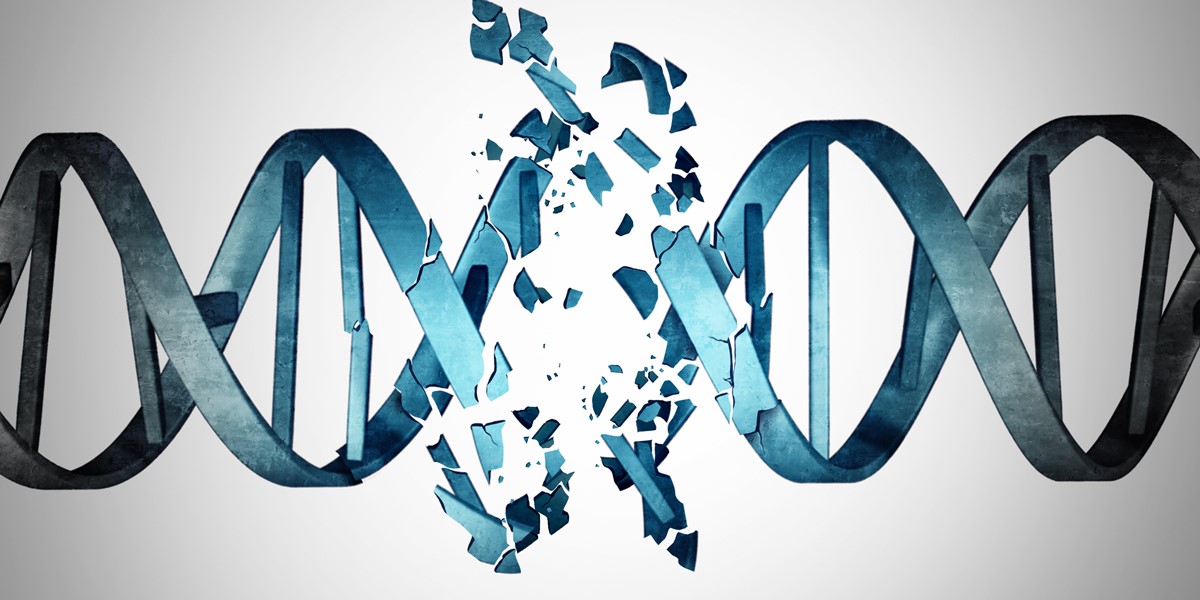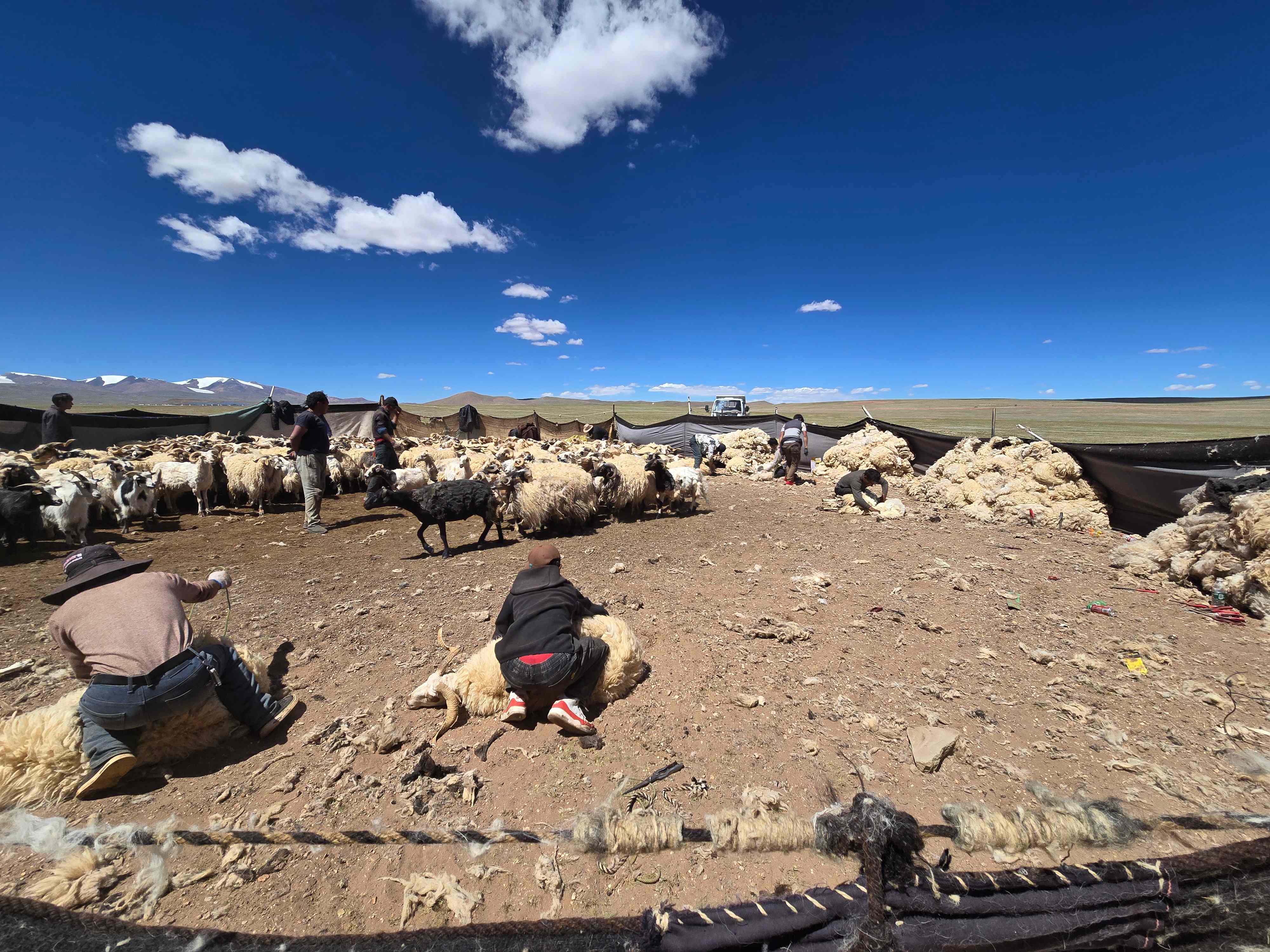最新研究:基因编辑技术有严重弊端,基因治疗的安全性存疑
来源: GM Watch 发布时间:2017-08-10 阅读:4897 次
食物主权按:提起转基因,通常会想到转入外源基因,比如转抗除草剂基因和转BT毒蛋白基因,这是当今广泛应用的转基因农业技术,其危害也已经被越来越多的研究和事实证实。然而基因改造并不只是转入外源基因,还包括新一代基因改造技术——基因编辑,这一种技术不涉及外源基因,但是并不代表着安全可靠,因为生物体是一个超级复杂的系统,而人类对其了解还很有限,一个基因的开关就可能会影响到很多特征的表达。最近国际科学期刊《自然·方法》发表的一项新研究,就发现基因编辑技术CRISPR在小鼠的基因中引入了数以百计的非期望的突变,此研究一出就打破了基因编辑精准安全的神话,所以同样引起相关行业的攻击。虽然现在关于基因编辑生物危害的研究还较少,但我们必须要警惕该技术所带来的风险同样不可控,危害同样巨大,只有严格管控相关研究才能避免基因编辑生物重蹈传统转基因作物那样的覆辙。
中文翻译
CRISPR诱发的突变---它们对食品安全意味着什么?
(图片说明:一个新的研究显示基因编辑过的小鼠被诱发出了数以百计的非期望的突变,“转基因观察网站”提出了这样一个问题:这对基因编辑食品安全性有何启示?)
《自然方法》发表一项新研究,发现基因编辑技术CRISPR在小鼠的基因中引入了数以百计的非期望的突变。【1】
在这项研究中,研究者对用CRISPR基因编辑技术修改了某个基因缺陷的小鼠作了全基因组测序。他们搜索了所有的突变,包括那些单核苷酸(DNA碱基单位)突变。
他们发现两只分别接受了基因治疗的小鼠的基因组出现了超过1500个单核苷酸突变和超过100个较大的基因删除和插入,而用研究人员常用的筛查生物基因组可能发生脱靶效应的位点的计算机算法(软件包),未能预测出任何一个这样的DNA突变。(译注:挺转者常宣称基因中易发生脱靶效应的位点可以通过计算机算法预测出来从而设法避免,这样可以提高基因编辑的精确性,在体外实验中,情况也大体如此,可在实际的动物体内进行的基因编辑证明,计算机预测完全失败)
虽然这项研究是有关基因治疗领域的,但是它对于如何监管用CRISPR及其它基因编辑技术开发的食物作物和动物有着明确的启示作用。
全世界的监管机构目前还在争论如何评估基因编辑产物的安全性。许多转基因推崇者建议“轻微的”监管甚至完全不监管,他们假定像CRISPR这样的基因编辑技术的产物是精确的、可预测的,因而是安全的。(译注:对于是否将利用基因编辑技术开发的作物当作转基因作物来同样管理,目前各国管理机构及世界权威机构尚在争议之中,美国FDA正在征求公众意见,而德国则是世界上第一个表态要将基因编辑作物当作转基因作物来监管的国家,同时它还建议欧盟采取同样的措施)
这项新的研究说明这个假设是错误的。那么该如何监管这类产品呢?
有一个建议是要求对基因编辑生物作全基因组测序并提交给生物安全评估机构。
但这带来另一个问题,如果全基因组测序显示除了期望的基因改变,没有任何突变或脱靶效应,那么我们是否可以确定其安全?
我们征求了迈克尔·安东尼奥博士的意见。安东尼奥博士是伦敦的分子遗传学家,他使用包括基因编辑在内的基因工程技术研究基因治疗。
安东尼奥博士说:
我同意基因编辑生物的全基因组测序必须提交给生物安全评估机构。如果全基因组测序显示除了期望的改变外,没有任何额外突变/脱靶效应,在某种程度上可以确定它是安全的。
但是这几乎完全不可能做到,应该考虑的问题是到底会出现多少脱靶突变,而不是它们是否存在。该技术并不完美,随着不断地改善,将来它可能会很少出现脱靶效应,但永远不会达到只产生所期望的改变这样的地步。
此外,在农业上使用基因编辑技术会牵涉到植物组织培养,它本身就天然会带来突变。所以不管基因编辑变得多精确,仍然会有大量由组织培养诱发的突变。
毫无疑问,许多基因编辑诱发的脱靶突变以及组织培养诱发的突变,对基因功能都没什么影响,但是也有许多则影响很大,并一直影响到最终上市的产品,不管是植物还是动物。
还有另一个特点使得基因编辑更可能带来脱靶基因损伤并导致功能紊乱,这是由于脱靶效应的出现并不是随机的,而是会发生在其它基因中与期望改变的DNA碱基单位次序相似的位置。
当然这并不排除会发生最近这个关于小鼠的研究中的并不让人吃惊的现象,即CRISPR诱发的脱靶效应会发生在基因中DNA碱基单位次序与目标位点有极大不同的位置上,这些研究者发现CRIPSR在小鼠中引发的大量脱靶突变并不能被常用的计算机算法预测出来。【1】
所以不仅需要进行全基因组测序,来确定CRISPR基因编辑技术带来的所有脱靶突变,还必须弄清这些非期望改变对基因功能全局模式的影响。因此除了全基因组测序,还应使用其它分子图谱分析或“组学”方法:转录组学---基因表达图谱,蛋白质组学---蛋白组成图谱,代谢组学---代谢产物图谱,和微小RNA组学---微小RNA图谱。
另外也很重要的,还要认识到,即便对一个特定基因的标靶期望改变,也会有非期望效应。例如,完全打断或改变一个酶的功能会导致非预期的或不可预测的生化副反应,并极大改变生物体(例如食物作物)的组成。
由于这类技术当前固有的局限,分子图谱方法并不能完全展现出基因编辑技术造成的食物产品组成的改变,因此还是需要利用已经建立的动物模型体系来进行长期毒理学研究。
在缺少这些研究的情况下,宣称基因编辑是精确可预测的,那只是基于盲信而不是科学。
转基因观察网站的结论
我们从安东尼奥博士的解释中得出结论:对基因编辑技术得到的产品至少应该像对老式转基因技术得到的产品一样进行严格的监管,实际上对所有类型的转基因产品都应该重新审核以纳入“组学”分子分析和长期动物喂养研究。目前世界上任何监管机构都不要求作这样的分析和研究。
参考文献
[1]Schaefer KA, Wu W-H, Colgan DF, Tsang SH, Bassuk AG, Mahajan VB. Unexpected mutations after CRISPR-Cas9 editing in vivo. Nat Methods. 2017;14(6):547-548. doi:10.1038/nmeth.4293.
英文原文
CRISPR-induced mutations – what do they mean for food safety?
As a new study reveals that hundreds of unintended mutations were induced in mice by a genome editing technique, GMWatch asks what the implications are for the safety of genome-edited food products
A new study published in Nature Methods has found that the genome editing technology CRISPR introduced hundreds of unintended mutations into the genome of mice.[1]
In the study, the researchers sequenced the entire genome of mice that had undergone CRISPR gene editing to correct a genetic defect. They looked for all mutations, including those that only altered a single nucleotide (DNA base unit).
They found that the genomes of two independent gene therapy recipients had sustained more than 1,500 single-nucleotide mutations and more than 100 larger deletions and insertions. None of these DNA mutations were predicted by the computer algorithms (software packages) that are widely used by researchers to screen the genome (the total DNA base unit sequence) of an organism to look for potential off-target effects.
While this study was conducted in the arena of gene therapy, it has clear implications for the regulation of food plants and animals derived from CRISPR and other genome editing techniques.
Regulatory agencies across the world are currently engaged in a debate about how to assess genome-edited products for safety. Many GMO proponents are proposing “light-touch” regulation or even no regulation at all, based on the assumption that the outcome genome editing techniques like CRISPR are precise, predictable, and therefore safe.
The new study shows that this assumption is false. So how should these products be regulated?
One suggestion that has been put forward is to require whole genome sequencing of gene-edited organisms to be conducted and submitted to biosafety authorities.
But this raises a further question: if the whole genome sequence does not show any mutations or off-target effects, other than those intended, should we be reassured?
We asked Dr Michael Antoniou to comment. Dr Antoniou is a London-based molecular geneticist who uses genetic engineering techniques, including genome editing, to develop gene therapies.
___
Dr Antoniou says:
I agree that the whole genome sequences of gene-edited organisms must be submitted to biosafety authorities. And if the whole genome sequence did not show any additional mutations/off-target effects other than those intended, this would be somewhat reassuring.
However, it is highly unlikely that this will ever be the case. It is a matter of how many off-target mutations there are, rather than a matter of their total absence. The technology is not perfect. It will in future become less prone to off-target effects as it is refined procedurally, but it is extremely unlikely that it will ever arrive at a point where only the intended change will result.
In addition, the application of genome editing technologies in an agricultural context will involve plant tissue culture, which has its own inherent mutagenic properties. So no matter how precise the genome editing becomes, there will always be a large spectrum of tissue culture-induced mutations present.
Many of the genome editing-induced off-target mutations, as well as those induced by the tissue culture, will no doubt be benign in terms of effects on gene function. However, many will not be benign and their effects can carry through to the final marketed product, whether it be plant or animal.
There is an additional feature that makes genome editing more likely to bring about off-target gene damage resulting in a disturbed function. This stems from the fact that the off-target effects will not be random, but will take place at sites within other genes that are similar in DNA base unit sequence to where the intended change has taken place.
This does not exclude the recent and unsurprising finding from the recent study in mice, which found that off-target effects from CRISPR can occur at sites within the genome whose DNA base unit sequence is markedly dissimilar from the targeted site. The researchers found that the large numbers of off-target mutations caused by CRISPR in mice could not be predicted by the usual computer algorithms.[1]
Thus not only is it necessary to conduct whole genome sequencing to identify all off-target mutations from CRISPR-based genome editing, but it is also essential to ascertain the effects of these unintended changes on global patterns of gene function. Therefore one needs to follow up the whole genome sequencing with other molecular profiling analyses or “omics”: transcriptomics — gene expression profiling, proteomics — protein composition profiling, metabolomics — profiling of metabolites, and miR-omics – microRNA profiling.
In addition, it is important to acknowledge that the targeted intended change in a given gene may also have unintended effects. For example, the total disruption or modification of an enzyme function can lead to unexpected or unpredictable biochemical side-reactions that can markedly alter the composition of an organism, such as a food crop.
The compositional alterations in food products produced with genome editing techniques will not be fully revealed by the molecular profiling methods due to the current inherent limitations of these techniques. So it is still necessary to conduct long-term toxicity studies in established animal model systems.
In the absence of these analyses, to claim that genome editing is precise and predictable is based on faith rather than science.
GMWatch’s conclusion
We conclude from Dr Antoniou’s explanation that the products of genome editing techniques should be at least as stringently regulated as the products of old-style GM techniques. In fact, regulation for all types of GM products should be overhauled to include “omics” molecular analyses and long-term animal feeding studies. Such analyses and studies are not currently demanded by any regulatory authority anywhere in the world.
References
1. Schaefer KA, Wu W-H, Colgan DF, Tsang SH, Bassuk AG, Mahajan VB. Unexpected mutations after CRISPR-Cas9 editing in vivo. Nat Methods. 2017;14(6):547-548. doi:10.1038/nmeth.4293.
Report by Claire Robinson















